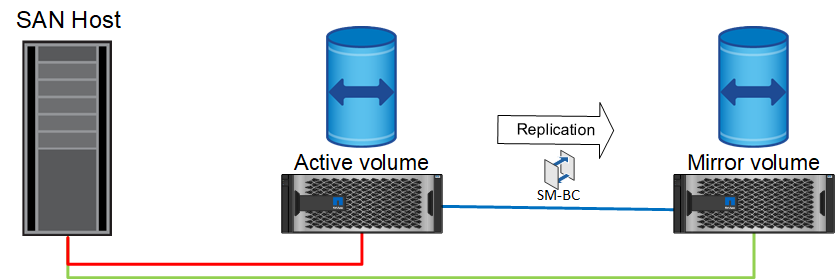Oracle databases with SnapMirror active sync
 Suggest changes
Suggest changes


SnapMirror active sync enables selective RPO=0 synchronous mirroring for individual Oracle databases and application environments.
SnapMirror active sync is essentially an enhanced SnapMirror capability for SAN that allows hosts to access a LUN from both the system hosting the LUN as well as the system hosting its replica.
SnapMirror active sync and SnapMirror Sync share a replication engine, however, SnapMirror active sync includes additional features such as transparent application failover and failback for enterprise applications.
In practice, it works similar to a granular version of MetroCluster by enabling selective and granular RPO=0 synchronous replication for individual workloads. The low-level path behavior is very different from MetroCluster, but the end result from a host point of view is similar.
Path access
with SnapMirror active sync makes storage devices visible to host operating systems from both the primary and remote storage arrays. Paths are managed through asymmetric logical unit access (ALUA), which is an industry standard protocol for identifying optimized paths between a storage system and a host.
The device path that is the shortest to access I/O is considered Active/Optimized paths and the rest of the paths are considered Active/Nonoptimized paths.
The SnapMirror active sync relationship is between a pair of SVMs located on different clusters. Both SVMs are capable of serving data, but ALUA will preferentially use the SVM that currently has ownership of the drives on which the LUNs reside. IO to the remote SVM will be proxied across the with SnapMirror active sync interconnect.

Synchronous replication
In normal operation, the remote copy is an RPO=0 synchronous replica at all times, with one exception. If data cannot be replicated, with SnapMirror active sync will release the requirement to replicate data and resume serving IO. This option is preferred by customers who consider loss of the replication link a near-disaster, or who do not want business operations to halt when data cannot be replicated.
Storage hardware
Unlike other storage disaster recovery solutions, SnapMirror active sync offers asymmetric platform flexibility. The hardware at each site does not need to be identical. This capability allows you to right-size the hardware used to support SnapMirror active sync. The remote storage system can be identical to the primary site if it needs to support a full production workload, but if a disaster results in reduced I/O, than a smaller system at the remote site might be more cost-effective.
ONTAP mediator
The ONTAP Mediator is a software application that is downloaded from NetApp support. The Mediator automates failover operations for both the primary and remote site storage cluster. It can be deployed on a small virtual machine (VM) hosted either on-premises or in the cloud. After it is configured, it acts as a third site to monitor failover scenarios for both the sites.



 Hyper-V
Hyper-V